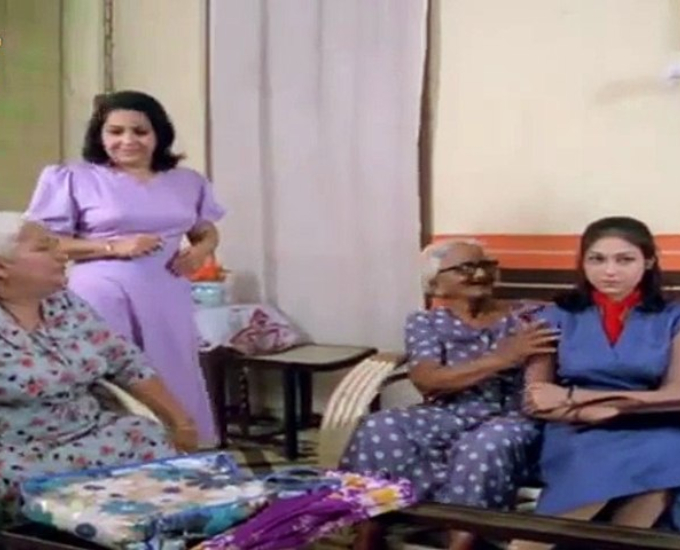As India's students speak out, it seems worth recalling a film about a
student who defied another regime
Sophie
Scholl was 21 when she was executed by the Nazi stateCharged with
having distributed leaflets co-authored by a non-violent political
resistance group called the White Rose, she was guillotined after a
trial on 22 February 1943. The 2005 German film Sophie Scholl: The
Last Days, directed by Marc Rothermund from a script by Fred
Breinersdorfer, dramatises her interrogation, trial and execution.
Though perhaps “dramatises” is not the best word for a film so
deliberately spare, choosing to rely almost entirely on the
historical transcripts left behind by the Gestapo (the Nazi Secret
Police) and the “People's Court” -- and thus unfolding, to a
great extent, within the confines of an investigator's office and a
courtroom.
Calling
themselves the White Rose, the student group to which Sophie belonged
brought out six different leaflets between June 1942 and February
1943. Distributed mainly in Munich, with copies also appearing in
Stuttgart, Cologne, Vienna, Freiburg, Chemnitz,
Hamburg and Berlin, the pamphlets warned Germans that Hitler
was leading them into the abyss, and called for people to speak out
against Nazi terror. “Support the Resistance Movement!” they
urged, for “Freedom
of speech, freedom of religion, and protection of the individual
citizen from the arbitrary action of criminal dictator-states”.
Those
words from eight decades ago leap off the page in a month in which
India has seen massive protests against a new Citizenship Amendment
Bill (CAA), which together with the proposed nationwide National
Register of Citizens (NRC), introduces religion as a criterion for
Indian citizenship for the first time in the history of our republic.
Watching Sophie Scholl,
it seems no coincidence that the resistance to the CAA and NRC, which
has gone far beyond criticism of the letter of the law to a
sorely-needed defence of the secular spirit of our Constitution and
of our democracy itself, has been spearheaded by students.
The
power of Sophie Scholl: The Last Days is in the details –
especially as you watch it in 2019 India, where everything from the
aesthetic remodelling of middle class fashion to the lines of
'argument' used by Fascist officials in the film are chillingly
recognizable from our real-life political situation today. The junior
officer of the Third Reich who hustles the film's 21-year-old student
heroine into the custody of Investigator Mohr, for instance, has a
moustache clearly modelled on Hitler's. Later, as Sophie (Julia
Jentsch) is led into her cold prison cell, we hear in the background one of
the Fuhrer's numerous speeches to the nation on
the radio, his rasping voice rising to the familiar nationalist frenzy as he identifies an internal enemy. “Total war is the demand of the hour,” he
proclaims, to loud clapping from his audience. “We must also put an
end to the bourgeois attitude which we have also seen in this war.
The danger facing us is enormous. The time has come to remove our
gloves and use our fists...”.
Many
of the arguments levelled by the Nazis against anyone who criticised
their government are voiced in the film by Mohr and later, the
infamous judge Roland Freisler. Over and over, we hear them berate
these students as “parasites” and “spoiled brat[s] who foul
[their] own nest[s], while others are dying on the front.” They are
painted as ungrateful wretches who do not appreciate that they are
only able to be
students “thanks to the Fuhrer.” Time and again, too, Sophie's
refusal to buckle under pressure drives Mohr off the deep end. “How
dare you raise your voice!” he shouts at her, the irony of the
statement clearly invisible to him. “The Fuhrer and the German
people are protecting you.”
Reading
a pamphlet in which Sophie's brother Hans argued that the war needed
to be brought to an end and expressed his hatred for “the way we
treat the Occupied Territories”, Mohr yells: “This is troop
demoralisation and high treason!” The insistence on celebration of
the army, and the idea that being critical of militarisation is
antinational will sound familiar to anyone who has lived through the
last five years of BJP rule.
Some
of the film's best moments come when Rothermund focuses on the
bafflement of the fascist in the face of openness: familial, but also
individual. It is a fascinating fact that Scholl had been, for a
time, a member of a Nazi youth group, before she and her brother and
his friends began to question what the regime wanted them to believe,
based on things they had witnessed on the Eastern Front as well as
information they had begun to access – about institutionalised
violence against Jews and disabled people, among others. Asked why
her father – a known critic of the regime who had served a sentence
for describing Hitler as “God's scourge to mankind” – had even
let Sophie join the Nazi Girls Organisation, she replies, “Our
father never influenced us politically.” “Typical for a
democrat,” sneers Mohr, lighting another cigarette. “Why did you
join?” Sophie's reply should resonate with all Indians who live with the promise of Acche Din: “I heard
that Hitler would lead our country to greatness and prosperity and
ensure that everyone had work and food and was free and happy.”
I
will leave you with what to me is the film's most important exchange.
Mohr insists that what he is doing is only to execute the law of the
land. “What can we rely on if not the law?” he says. Sophie's
answer seems simple, but it is one all of us need to hear: “On your
conscience!”
Published in Mumbai Mirror, 29 Dec 2019














